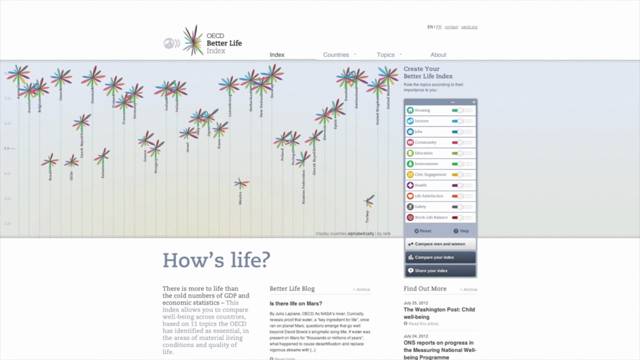FOR translating a 22-minute video from English into Spanish at short notice, 7Brands Global Content, a professional-translation firm based in New York, quoted “approximately $1,500”. This fee seems in line with the local going rate for the job from a firm which boasts membership of three professional associations and clients such as Chase and Bank of America. Not so long ago, paying the local rate was the only option. Today anyone seeking to get this sort of job done is only a click away from the whole world of professionals competing to do it far cheaper.
That same translation job was advertised on Elance.com and oDesk.com, the two busiest among several newish online marketplaces for work, or “talent exchanges”. On Elance it soon attracted 25 bids, from individuals in 15 countries. For around half the bidders, this would be their first job, which raised questions about how good their work would be (especially the Uruguayan who promised to “translate your interview perfetly”). But some seemed competent. According to his Elance page, “oswaldo g”, from Colombia, has already completed 31 jobs, earning a combined $4,193 and a satisfaction rating of 4.9 (out of 5). He quoted a tempting $16.44 an hour—though not as tempting as the five bids on oDesk (three of them by five-star-rated workers), from Argentina, Brazil, Indonesia, Mexico and the Philippines. Each of them offered a flat rate for the completed job, ranging from $33.33 down to just $22.22.
Such whopping price differences help explain why these and other work marketplaces have been growing fast. Last year the value of this sort of online work topped $1 billion for the first time; it will double to $2 billion in 2014, and reach $5 billion by 2018, forecasts Staffing Industry Analysts, a “contingent work” consultant. ODesk was the matchmaker for 35m hours of work in 2012 (over 50% more than in 2011), divided between 1.5m tasks, at a total cost to the employers of $360m. The value of work on Elance rose by 40% in 2012 to exceed $200m for the first time.
ODesk and Elance claim similar numbers of firms posting jobs, just over half a million each, and of signed-up contractors—3m on oDesk versus 2.5m Elancers. The fiercest of rivals, each claims to be the market leader, even though the monetary value of work done via oDesk is almost twice as great. “We cater to the higher end of the market, and don’t do big commodity contracts with firms like eBay and Facebook,” argues Fabio Rosati, the founder of Elance. Finding innovative ways to meet the needs of bigger companies is one of the reasons oDesk’s lead is likely to continue growing, retorts Gary Swart, its founder.
Anecdotal support for both sides is provided by Marc Piette, a founder of Locu, a start-up that uploads local content such as restaurant menus to the internet. The firm supplements its core staff of 20 full-timers with 300-600 oDeskers on any given day. He says oDesk has been helpful in developing tools that make it easy to hire, say, 50 workers at a time. The work is not terribly demanding (for instance, looking at menus to ensure that the Locu algorithm has properly separated starters from desserts). Mr Piette thinks this is too complex to do via Amazon’s Mechanical Turk site, on which people can do basic “micro-work” such as checking the spelling of a web address, but nor is it the sort of professional-level work Elance says it specialises in.
Freelancer, the third-placed exchange, is unapologetic about being cheap; it has more than 7m registered workers, but generates far less work by value than its bigger rivals. In March, Rev, a new competitor, entered the fray, launched by former oDesk employees with a mission to “do for online work what Amazon did for online retail” (a mission admittedly shared with everyone else in the industry).
Location, reputation, verification
There are other differences in the business models of the market leaders. oDesk simply takes a cut of all completed jobs; Elance also charges freelancers optional fees for extra services. Both have been trying to improve the quality of the reputation-rating system, and to ensure that work is being done by the person who accepted it rather than passed on to someone potentially less competent (“Still the biggest risk,” says Mr Piette).
ODesk wins a lot of praise for managing payments to people in far-flung places, and for absorbing all the payment risk. The company also introduced a way to monitor whether work is being done when it is claimed to be, by taking pictures of the worker and screen at random intervals.
The exchanges are providing opportunities not just to do one-off jobs, but to build a business. In 2009 Josh Warren, an entrepreneur based in Dallas, started earning $15 an hour doing work for e-commerce sites he found on oDesk. Soon he was earning $125 an hour, and had more work than he could do alone. So in 2010 he recruited via oDesk a Polish counterpart, who now runs the Posnan branch of Creatuity, Mr Warren’s web-services company. He now employs 23 people and is earning seven-figure revenues from clients in America, Australia, Britain and even India.
Nice work if you can get it
Opinions differ over how much these talent exchanges will transform the global workforce as a whole. Clearly, they are benefiting from a trend for growing numbers of people to work freelance or on temporary contracts. Depending on the definition, between one-fifth and one-third of American workers are now freelancers, contractors or temps, up from 6% in 1989, according to Accenture, a consultancy. Yet the $1 billion of work done through talent exchanges in 2012 is only one-third of one percent of the estimated $300 billion spent worldwide on these “contingent workers”, which suggests that talent exchanges are still barely scratching the surface. However, those they enroll seem to enjoy the experience, which is why the numbers signing up are growing fast.
There is bound to be a limit to the sorts of work that can be offered through online exchanges, but maybe not much of one. So far, most of the jobs on oDesk and Elance require skills in information technology. The top two skills hired on oDesk last year were in web programming and mobile apps. Yet the range of work offered is expanding fast, says Mr Swart. In 2007 just four categories of work accounted for 90% of the dollars billed on oDesk; in 2012, that 90% was made up of 35 sorts of work, with project management, translation and copywriting among the fastest-growing.
Online exchanges are increasingly important even for jobs—such as household repairs and errand-running—that cannot be contracted out to distant workers. A crop of sites cater to local tradespeople such as builders, plumbers and drivers, including RatedPeople and MyBuilder. Workers do not even need a trade to find local work. TaskRabbit, a site for hiring people to do things such as collecting groceries, assembling Ikea furniture or making a delivery (for a flat fee of $10), is booming. It now covers nine American cities, with London likely to follow soon. This is good news for both hirers and those looking for work, though it is not yet clear how attractive a business it will be for the exchanges themselves: Angie’s List, one of the oldest online marketplaces for local tradespeople, has still to turn an annual profit after 17 years.
Work that brings the employee into the hirer’s home clearly presents greater risks than when it is entirely virtual. Screening out a potential Hannibal Lecter is not easy. But the websites’ reputation ratings, providing recommendations from a number of previous hirers, are a big improvement on the old method of picking someone at random out of a phone book.
Critics of the online exchanges claim they are all about undercutting wages in rich countries by shifting work to poor ones. But both Elance and oDesk insist that the flow of work is not all in one direction. For instance, there are around 716,000 registered Elancers in America, double the number in India. Whereas last year America was the biggest-spending country on oDesk, with India the main recipient (thereby fitting the stereotype), the third-biggest earners of dollars on oDesk were freelancers not in some developing country but in America itself. Moreover, workers who start cheap tend not to stay that way: helped by the rating system, workers on oDesk increase their hourly rate by almost 60% on average in their first year, and by around 190% in three years.
As Accenture points out in its report, employers should henceforth think of their workforce as made up not just of current full-time employees but also of the vast army of potential workers that are a click away. This applies just as much to big, established firms as to thrusting young start-ups.








